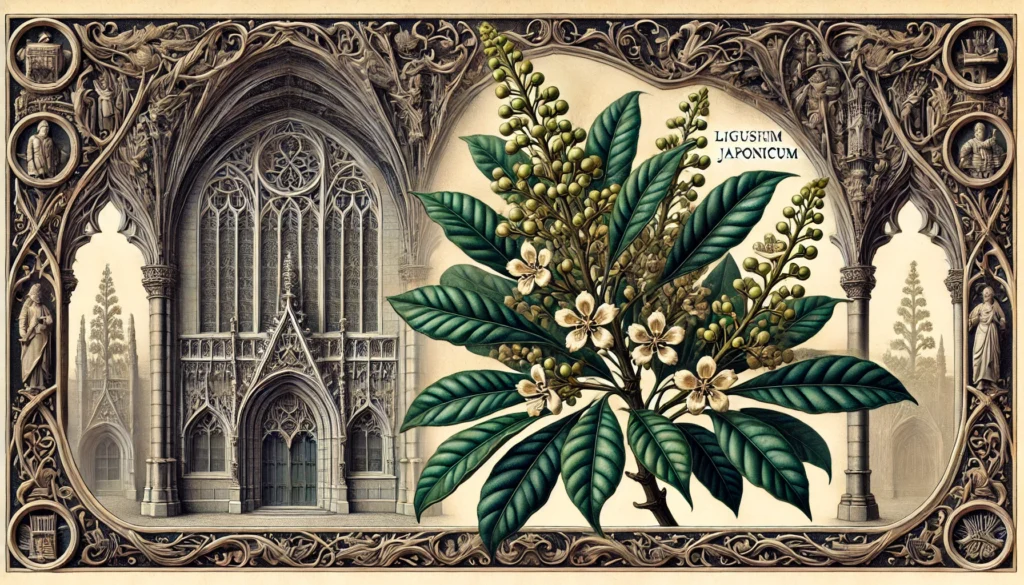

Home » Cat Plants » The Toxic Dangers of the Wax-Leaf Plant to Cats

The wax-leaf plant, scientifically known as Ligustrum japonicum or Japanese privet, is a toxic plant that poses a significant threat to cats if ingested. This evergreen shrub or small tree belongs to the Oleaceae family and contains terpenoid glycosides, which are harmful to felines.
Cats are not allergic to the plant per se, but its toxic components can cause severe health issues. Commonly found in gardens and landscapes, this plant is popular for its ornamental value but can be dangerous to pets.
Ingestion may cause mild gastrointestinal upset, but is generally not life-threatening.
Ingestion can result in mild symptoms like vomiting, diarrhea, or drooling. Rarely fatal but may require veterinary care.
Eating these plants can lead to more pronounced symptoms like abdominal pain, lethargy, or difficulty breathing. Veterinary intervention may be necessary.
Ingesting even small amounts can cause severe symptoms like organ damage, seizures, or cardiac failure without rapid treatment.
All parts of these plants are extremely poisonous to cats and can quickly lead to death, even with immediate veterinary care.
** Please note: Please note that toxicity level can vary based on the amount ingested and the specific cat. It's always best to keep these plants completely inaccessible to cats and seek immediate veterinary care or call the poison hotline if you suspect your cat has ingested any part of a toxic plant.
When a cat ingests parts of the wax-leaf plant, it can experience a range of toxic effects. The severity of symptoms may vary depending on the amount consumed and the individual cat’s sensitivity.Common symptoms of wax-leaf plant poisoning in cats include:
In severe cases, ingestion of large quantities may lead to more serious symptoms such as:
If you suspect your cat has ingested any part of the wax-leaf plant, it’s crucial to seek veterinary attention immediately.
When presented with a cat that has potentially ingested a wax-leaf plant, a veterinarian will likely follow these steps to diagnose and treat the condition:
The veterinarian’s primary goal will be to manage symptoms and prevent further absorption of toxins while the cat’s body eliminates the harmful substances.

A: Yes, the Wax-Leaf Plant (also known as Ligustrum japonicum) is harmful to cats. It contains toxic compounds that can cause gastrointestinal issues like vomiting and diarrhea.
A: Symptoms of Wax-Leaf poisoning in cats include vomiting, diarrhea, and lethargy. If your cat ingests this plant, immediate veterinary attention is necessary.
A: Ligustrum japonicum is moderately toxic to cats. Ingestion can lead to severe digestive discomfort and other serious health issues.
A: Cats can recover from Wax-Leaf Plant poisoning if treated promptly. The recovery process depends on the amount ingested and the timeliness of medical intervention.
A: No, it is not safe to have a Wax-Leaf Plant around pets such as cats. The plant’s toxic nature poses significant health risks, so it’s best to keep it out of reach.
A: If your cat ingests a Wax-Leaf Plant, seek veterinary care immediately. Quick action is crucial to prevent severe symptoms and complications.
Ligustrum japonicum, commonly known as the Japanese privet or wax-leaf plant, is native to Japan and Eastern Asia. It was introduced to the United States in 1845 from Japan and Korea.
The plant has been widely cultivated for its ornamental value, prized for its glossy, dark green leaves and clusters of small white flowers. Its ability to thrive in various conditions and its evergreen nature have made it a popular choice for hedges, screens, and general landscaping.
Over time, the wax-leaf plant has become naturalized in many parts of the world, including parts of Europe and North America. Its adaptability has led to it being considered invasive in some regions, where it can outcompete native species.
Despite its aesthetic appeal, the recognition of its toxicity to animals, particularly pets like cats and dogs, has led to increased caution in its use in residential landscapes. The plant’s history as an ornamental species is now balanced with awareness of its potential dangers to domestic animals.
Please note: The information shared in this post is for informational purposes only and should not be considered as veterinary medical advice.
🐾 A hilarious or heart-melting cat video
🐾 Our latest paws-on review of a cool cat toy